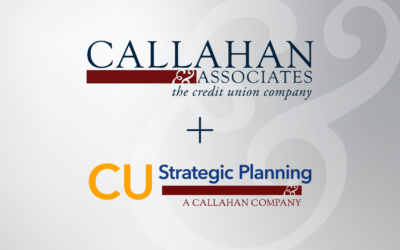Insights From Callahan Consultant, Chris Howard
There’s a growing — albeit misguided — distrust of credit unions today, making effective governance more important than ever … and harder than ever.
At its core, good governance is fairly simple, although never easy. The keys to good governance are to understand what the job is (and what the job is not); to show up, be prepared, and participate constructively; and to check your egos at the door.
I’ve written a lot on CreditUnions.com about the obligations and challenges of good governance, and every year Callahan & Associates works with scores of credit unions on issues of practical governance. Management oversight is invariably the area of greatest concern and focus, but it’s only one job among many.
Here are a few fundamentals that might be less obvious but are arguably just as important. Do these jobs well, and you empower management to excel — making its oversight the easiest governance task of all.
1. You are not your member.
Governance is the representation of member-owners and their interests. To do that effectively, you, as board members, should start by acknowledging you are different from the bulk of the credit union’s membership. You are probably older, wealthier, better educated, and more financially sophisticated. You have different life experiences and have more leisure time; otherwise, you wouldn’t have the bandwidth to be a director. Your interests and expectations will be different as well. Your job is to serve the memberships’ needs, interests, expectations, and life circumstances, not your own.
2. Your primary job is about tomorrow, not today.
The board hires professionals to manage the day-to-day and also help prepare for the future. Ultimately, however, it is the board that articulates why the credit union exists, defines goals and aspirations, and sets the course for getting from where it is today to where it wants to be in the future. That’s strategy. It’s a responsibility the board and management share, but only the board can ensure the credit union’s purpose and aspirations are appropriate, actionable, achievable, and impactful, and only the board can ensure management has the resources, authority, and ability to achieve them.
3. Purpose must be more than a pretty word.
In a mission-driven industry, purpose needs to do more than motivate, energize, inspire, and unite. To deliver on its promise, purpose needs to be actionable. It needs to engage and impact stakeholders constructively and materially. It needs to be integrated into the balance sheet and income statement. It needs to shape the credit union’s products and services and deliver results that are measurable, measured, tracked, and communicated.
4. Always speak with one voice.
This is a key success factor for board governance at any level, in any organization, and no matter the scope of responsibilities. It should be non-negotiable. In the boardroom, skepticism and constructive conflict are not only acceptable but often desirable; however, when the meeting ends, so must all debate. No exceptions. Regardless of what goes on in those meetings, unity and clarity of message is mandatory in public. Nothing legal is less ethical than airing dirty laundry in public. It undermines the cooperative and stifles good governance. Directors have an absolute duty of loyalty and care. Speaking with one voice is the epitome of these most basic obligations.
5. Know your boundaries.
The board’s job is critical and is fundamentally different from management’s job. Boards hire professionals to run the credit union. Let them do it. Stay out of the weeds. Stay away from delinquencies. Don’t get involved in personnel decisions. Boards must focus on managing themselves, meeting the responsibilities specific to them, and making sure their institution is moving, safely and sustainably, in the direction they set. Boards can’t do this if they are distracted by trying to do management’s job. Supervision by looking over management’s shoulder is bad governance.
Bonus: Manage risk, don’t avoid it.
Establishing a reasonable risk appetite, with the advice and cooperation of management, is another job that only the board can do. Good governance means going beyond just signing off on executive recommendations. It’s imperative board members understand the risks the credit union is taking, what board members intend to accomplish by the credit union taking them, and how the credit union intends to manage them. Despite the apparent belief of all too many examiners, credit unions are in the risk management and mitigation business, NOT the risk avoidance business. Setting the parameters to do that is one more simple, but difficult, governance responsibility.
Good governance is active, not passive, but it’s also permissive toward management. Constructive action and positive impact are the product of a board engaged in servant leadership, the true calling of a Class A board. The best boards validate the reasons their credit union exists, empower the team they’ve hired to achieve that purpose, and back management when it comes time to execute. Of course, good boards take responsibility and action when their management team fails to perform, but for the best boards, that’s not an issue.
Sustainable Success Through Strategic Governance
Chris is a consultant at Callahan & Associates. Looking for an outside perspective to facilitate your board meetings or strategic planning? Let’s connect.
More Blogs
Callahan & Associates and CU Strategic Planning Combine To Increase Credit Union Impact
Callahan & Associates and CU Strategic Planning proudly announce their strategic alliance, driven by a shared vision to empower credit unions to make a meaningful impact on their members and communities.
Insights And Advice For Credit Union Leaders
Are you new to a leadership role or preparing for one? Are you focused on empowering future leaders? Are you a veteran leader looking to be inspired? We recently asked new and established leaders what it means to embrace different leadership styles, encourage culture changes, and what advice they have for the next generation of leaders.
15 Key Ratios Every Credit Union Board Should Know
There are thousands of data points you can share with your board about your credit union’s performance, the industry, and the economy. The challenge is identifying which key ratios are most important to your credit union. If you’re looking for a list of key ratios and...
Hassle-Free Benchmarking For Credit Unions
At Callahan & Associates, we understand that smaller credit unions often face challenges in benchmarking their performance against their peers due to limited resources, budgets, and time constraints. That’s why we created a simple, streamlined level in our...
Why Great Lakes CU Is Betting Big On Partnerships
Last week, Callahan & Associates hosted the inaugural installment in its "A Conversation With..." webinar series, featuring Great Lakes Credit Union CEO Steve Bugg. In the exclusive conversation, Bugg emphasized the value partnerships can bring to the industry and...
Browse 5300 Call Reports With Ease.
Every CU 5300 Call Report – Instantly And Seamlessly. If your goal is to reach more credit unions with your products and services, you likely know all too well how long it takes to pull 5300 Call Reports for dozens of prospects to fuel your sales pipeline and...
How Sales Teams Work More Efficiently In Peer Suite
Is your team spending countless hours manually pulling reports and compiling data for your credit union prospects? Are you looking for a more efficient way to collaborate with your team and onboard new members? Callahan’s Peer Suite helps credit union suppliers...
Ultimate Benchmarking Guide For Credit Unions
What Is Benchmarking? Benchmarking is the interpretation and analysis of financial information in order to make direct performance comparisons to other credit unions, banks, and customized peer groups. It enables a credit union to track internal goals, identify...
How Interra Is Advancing Its Purpose Journey
Several years ago, the five-member executive team of Interra Credit Union ($1.7B, Goshen, IN) participated in a virtual learning experience from Callahan & Associates offered in collaboration with Harvard Business School Online.
3 Peer Group Types That Go Beyond Asset Size
While benchmarking your performance against asset-based peer groups has value, relying strictly on asset size for peer group analysis can skew your benchmarks by including credit unions that don’t share much in common with your institution. Just take a look at this...









